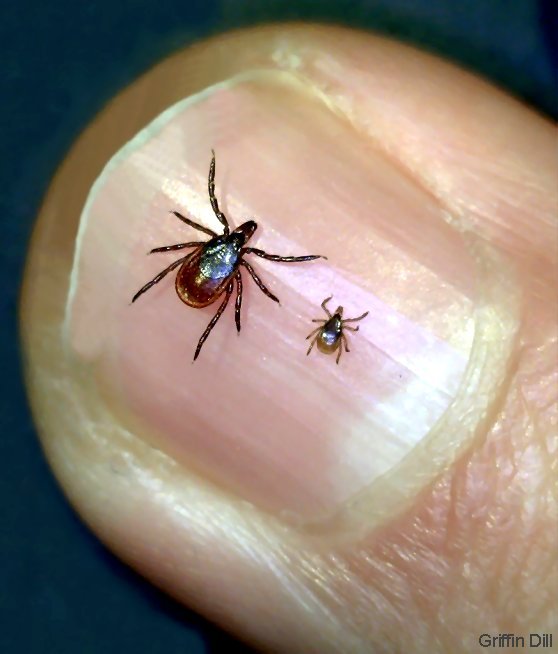MDH says it’s an effort to help residents avoid tick bites.

Adult female deer tick (R) and nymph (L) (Photo from University of Maine Cooperative Extension)
Baltimore, Md (KM) A campaign has been launched by the Maryland Department of Health called “Maryland, Get Ticked Off..” “The whole point of ‘Maryland Get Ticked Off’ is to provide that awareness as Marylanders get out there, explore Maryland’s natural beauty, “says Dr. David Crim, The State Public Health Veterinarian. “We want to make sure that if you’re getting into tick habitat, that you can take some very simple steps to prevent those tick bites from occurring.”
Some of those “simple steps” include “wear long pants. Wear long sleeves. You want to keep the ticks off your body,” says Dr. Crum. “Tuck your shirt into your pants. That lovely fashion statement of tucking the pants into the socks. You want to keep those ticks off really on the outside of the clothing and not get in.”
He also says wear light colored clothing so you can see any ticks that climb on to your clothes, and remove them. “Use an EPA-registered insect repellant like Deet, or IR 3535. It’s really a personal choice as to which one you really want to use,” says Dr Crum.
You can also treat your clothes with permethrin, but don’t us it directly on your skin.
Ticks can be found in wooded and bushy areas with high grass and leaf litter, according to the Health Department.
When you come inside, the Health Department says check your body, particularly under the arms, in and around the ears, inside the belly button, back of the knees, in and around the hair, between the legs and around the waste. “If you do find an attached tick, use fine tipped tweezers. Grasp the tick as close to the skin surface as possible, and then pull up with steady even pressure. You want to be able to remove that tick safely,” says Dr. Crum.
He says the symptoms of tick-borne illness can vary. “A lot of the early symptoms of most tick-borne disease are kind of vague: fever, headache, maybe fatigue. Certain ones like Lyme disease can have a very distinctive bullseye rash. Ehrlichia can also cause a rash as well,” says Dr. Crum.
The Health Department says most tick-borne illnesses can be treated with antibiotics.
Even though we’re coming up on the colder months, Dr. Crum says ticks can be very active even as the temperature drops. “It’s above 40-degrees Fahrenheit, obviously ticks are going to be active,”: he says “The only time ticks may slow down is if there’s a heavy snow cover that may impede their motion, or if it’s below zero.”
By Kevin McManus